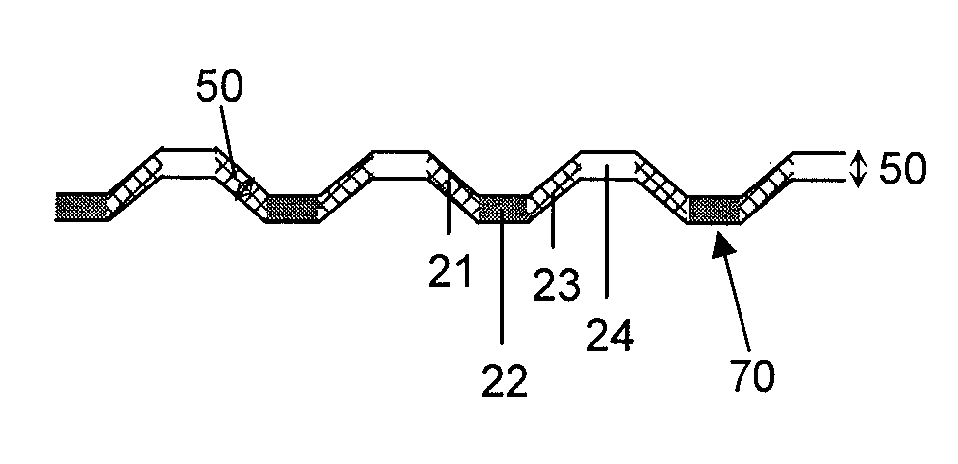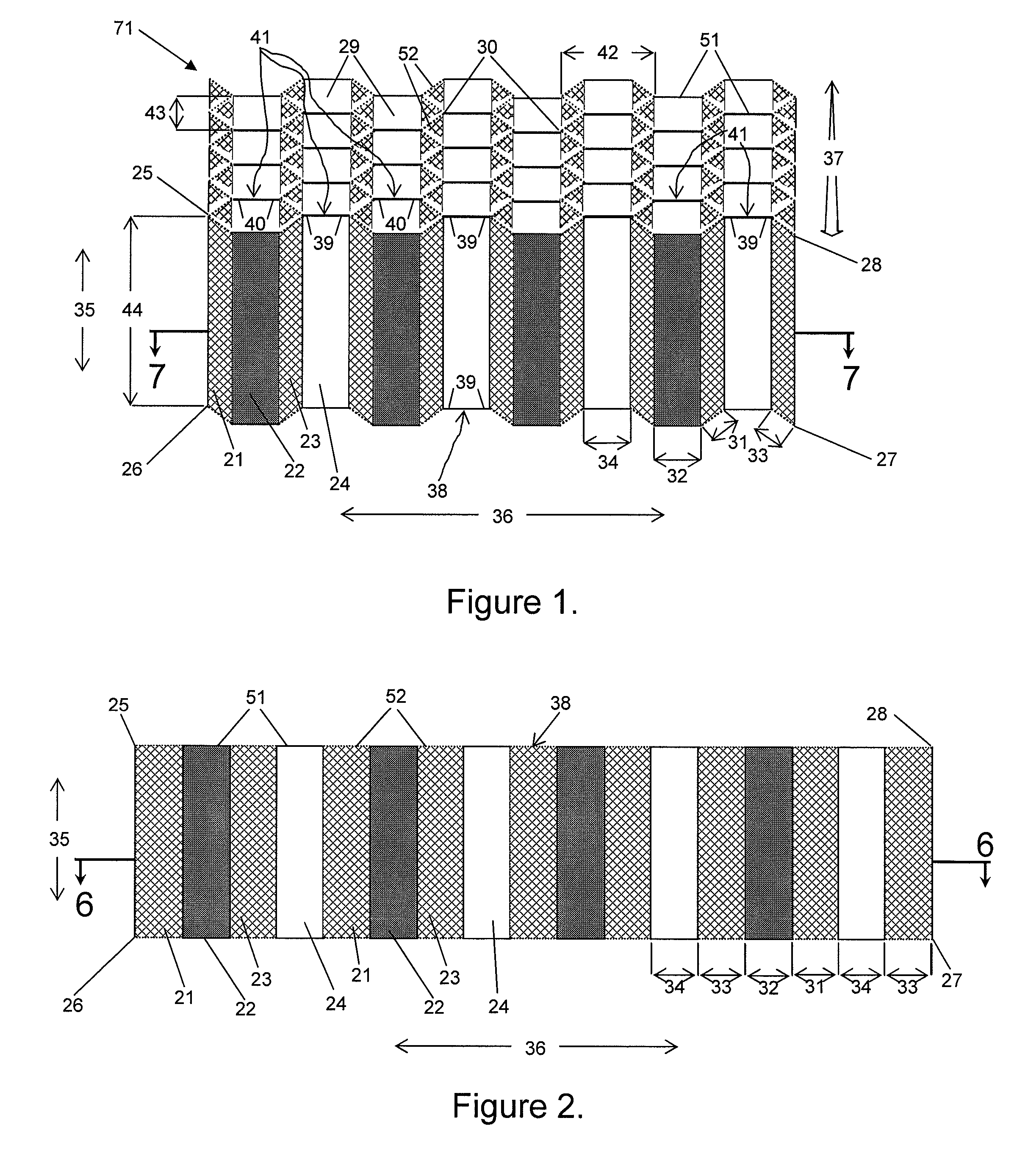Honeycomb with a fraction of substantially porous cell walls
a honeycomb and cell wall technology, applied in the field of artificial honeycomb structures, can solve the problems of difficulty and expense in manufacture, limited the performance and applicability of honeycomb type structures in a number of ways, and the movement of heat into air is commonly a rate-limiting step, so as to achieve easy and inexpensive, high surface area to volume ratio, and high effective thermal conductivity
- Summary
- Abstract
- Description
- Claims
- Application Information
AI Technical Summary
Benefits of technology
Problems solved by technology
Method used
Image
Examples
Embodiment Construction
[0078] A honeycomb structure of this invention can include at least two contiguous hollow cells including a plurality of enclosing walls, wherein at least part of at least one of the total number of enclosing walls is substantially porous and at least one is substantially nonporous, and wherein fluid can flow through the at least one porous wall portion. In many embodiments, substantially porous wall portions can comprise entire walls. Solid walls provide advantages that can include, but may be not limited to, strength, impermeability and an effective thermal conductivity equal or near equal to the conductivity of their constituent materials. Porous walls can provide advantages including, but not limited to, permeability to fluid flow, which may include one or more of air flow, water flow, or flow of other gaseous mixtures or liquids, or gases; a high surface area to volume ratio; filtration capability; acoustic dampening capability; relatively light weight per total volume (solid a...
PUM
| Property | Measurement | Unit |
|---|---|---|
| Thickness | aaaaa | aaaaa |
| Porosity | aaaaa | aaaaa |
| Fraction | aaaaa | aaaaa |
Abstract
Description
Claims
Application Information
 Login to View More
Login to View More - R&D
- Intellectual Property
- Life Sciences
- Materials
- Tech Scout
- Unparalleled Data Quality
- Higher Quality Content
- 60% Fewer Hallucinations
Browse by: Latest US Patents, China's latest patents, Technical Efficacy Thesaurus, Application Domain, Technology Topic, Popular Technical Reports.
© 2025 PatSnap. All rights reserved.Legal|Privacy policy|Modern Slavery Act Transparency Statement|Sitemap|About US| Contact US: help@patsnap.com



